Add Color, Beauty, and Tropical Charm to Your Outdoor Space
Hibiscus plants are among the most vibrant and versatile flowering shrubs you can add to your garden. Known for their large, trumpet-shaped blooms and lush foliage, these tropical beauties come in a wide range of colors and sizes, making them perfect for borders, containers, or even privacy hedges. More than just ornamental, hibiscus flowers attract pollinators like bees, butterflies, and hummingbirds—adding both color and life to your landscape. If you’re looking to infuse your garden with tropical flair and floral drama, here are 7 stunning hibiscus varieties that promise to transform your outdoor space into a radiant paradise.
1. Hibiscus rosa-sinensis (Tropical Hibiscus)
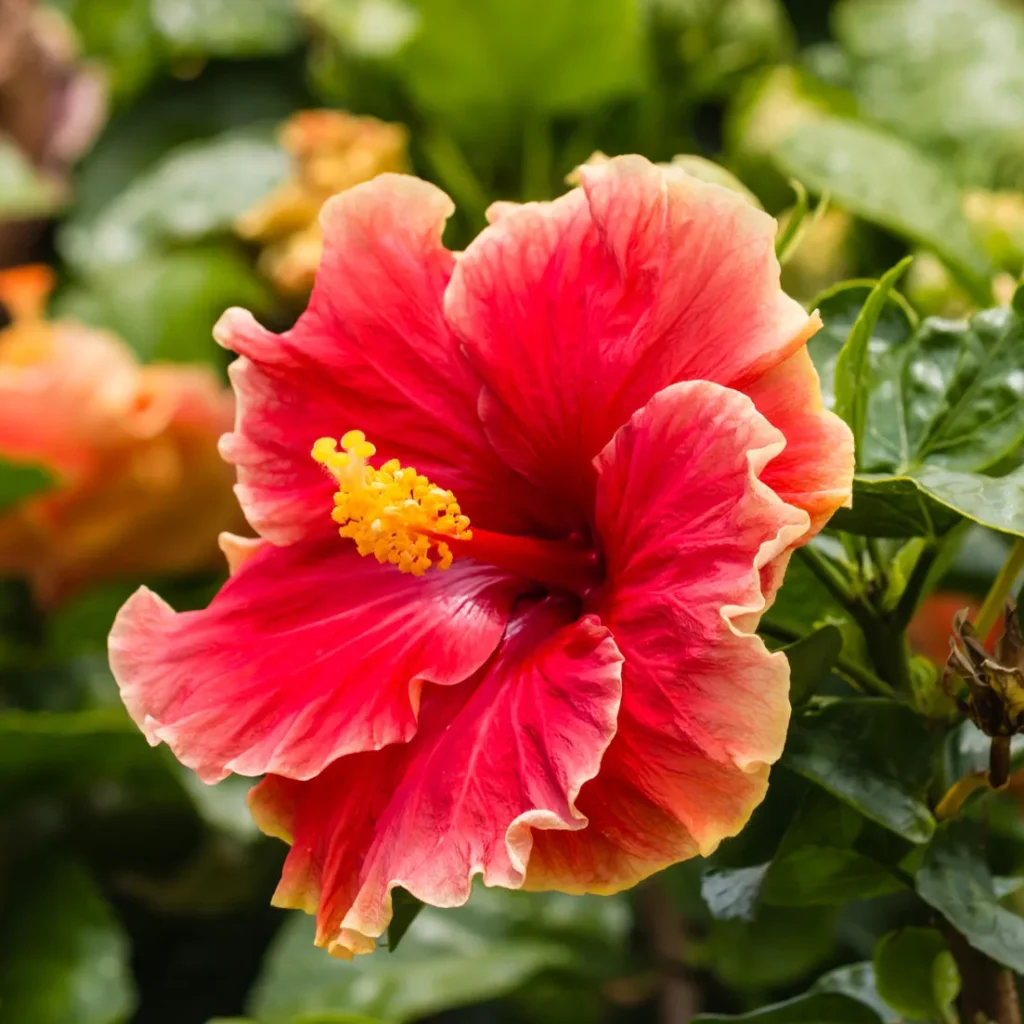
This classic tropical hibiscus is perhaps the most popular species, known for its bold, vibrant flowers in shades of red, pink, yellow, and orange. The glossy, dark green leaves add a rich backdrop that makes the flowers pop. Blooms can grow up to 6 inches in diameter, often lasting just one day but blooming continuously throughout the warm season. Ideal for containers or sunny borders, tropical hibiscus requires full sun, well-drained soil, and protection from frost. It’s perfect for those who want a lively, summer-long floral show.
2. Hibiscus syriacus (Rose of Sharon)
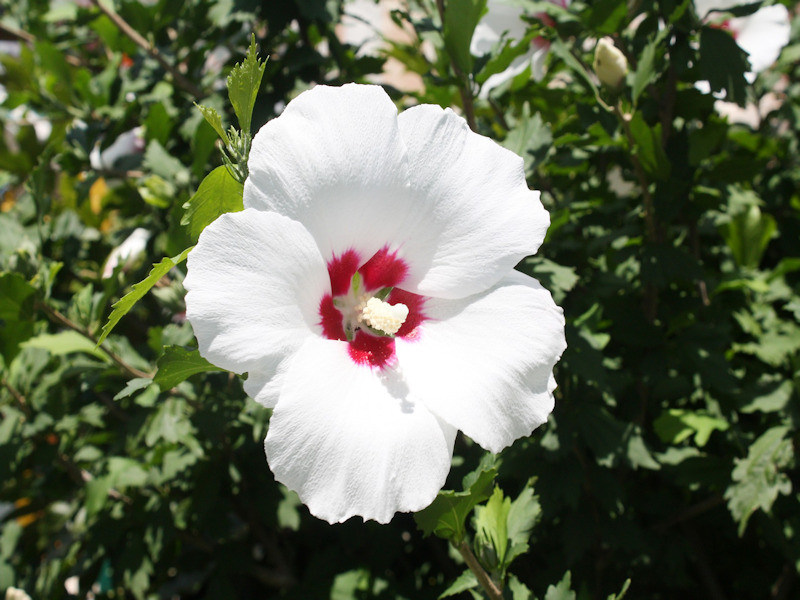
A hardy hibiscus variety, Rose of Sharon is a deciduous shrub native to East Asia. Unlike tropical hibiscus, this plant is cold-hardy and can survive in USDA zones 5–9. It produces striking single or double flowers in shades of white, lavender, pink, and blue from midsummer to fall. The plant can grow up to 12 feet tall and is great for hedges or backdrops in mixed borders. Low-maintenance and drought-tolerant, it thrives in full sun and well-draining soil. Its upright form and reliable blooms make it a favorite for cottage-style gardens.
3. Hibiscus moscheutos (Hardy Perennial Hibiscus)
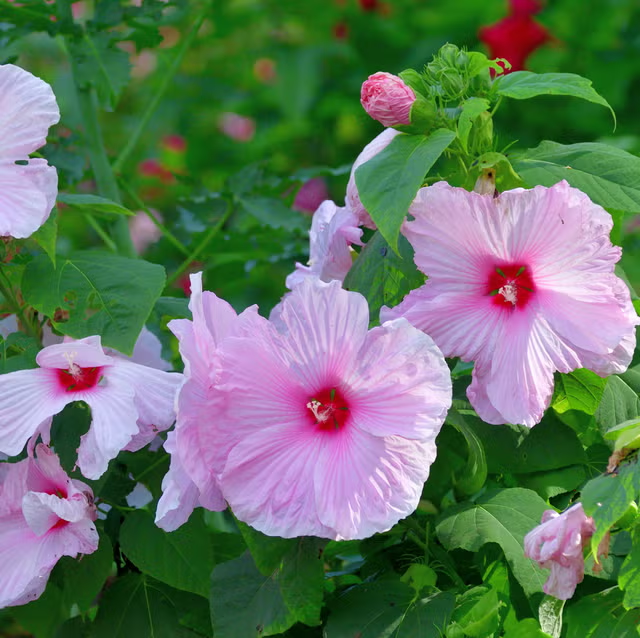
Often called the swamp rose mallow, this North American native is famous for its giant dinner-plate-sized blooms that can reach up to 12 inches wide. The flowers come in shades of white, pink, and red, often with dark centers that add dramatic contrast. Hardy hibiscus dies back in winter and returns in spring, making it a great perennial option for colder climates (zones 4–9). It prefers moist soil and full sun and is ideal for planting near water features or rain gardens. Its show-stopping blooms make it a true garden centerpiece.
4. Hibiscus acetosella (Red Leaf Hibiscus)
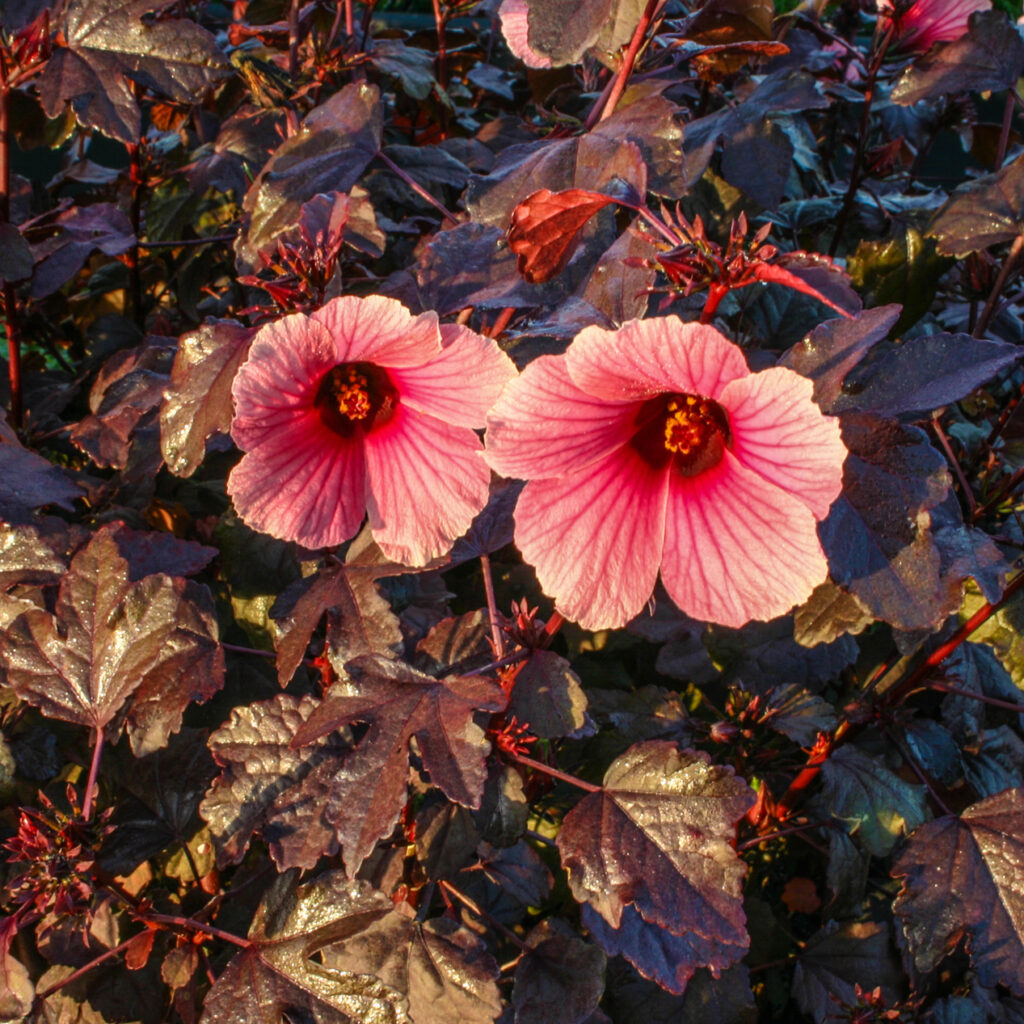
Unlike other hibiscus plants known for their flowers, Hibiscus acetosella is prized for its deep burgundy foliage that resembles Japanese maple leaves. The leaves add dramatic color and texture, while the plant also produces small, hibiscus-like red flowers. It grows quickly and makes an excellent accent in mixed beds or tropical-themed gardens. Though technically a perennial in warmer zones, it is often grown as an annual in cooler regions. Its foliage adds interest even when the plant isn’t blooming, making it a versatile addition to the garden.
5. Hibiscus mutabilis (Confederate Rose)

This unique hibiscus variety is known for its color-changing blooms—starting as white in the morning, turning pink by midday, and deepening to red by evening. Native to China, the Confederate Rose grows as a large shrub or small tree, reaching heights of 6 to 15 feet. It blooms in late summer and fall and thrives in full sun to partial shade. Ideal for Southern gardens, this plant brings late-season color and a touch of magic to the landscape. Its striking transformation makes it a conversation piece in any garden.
6. Hibiscus arnottianus (Hawaiian White Hibiscus)
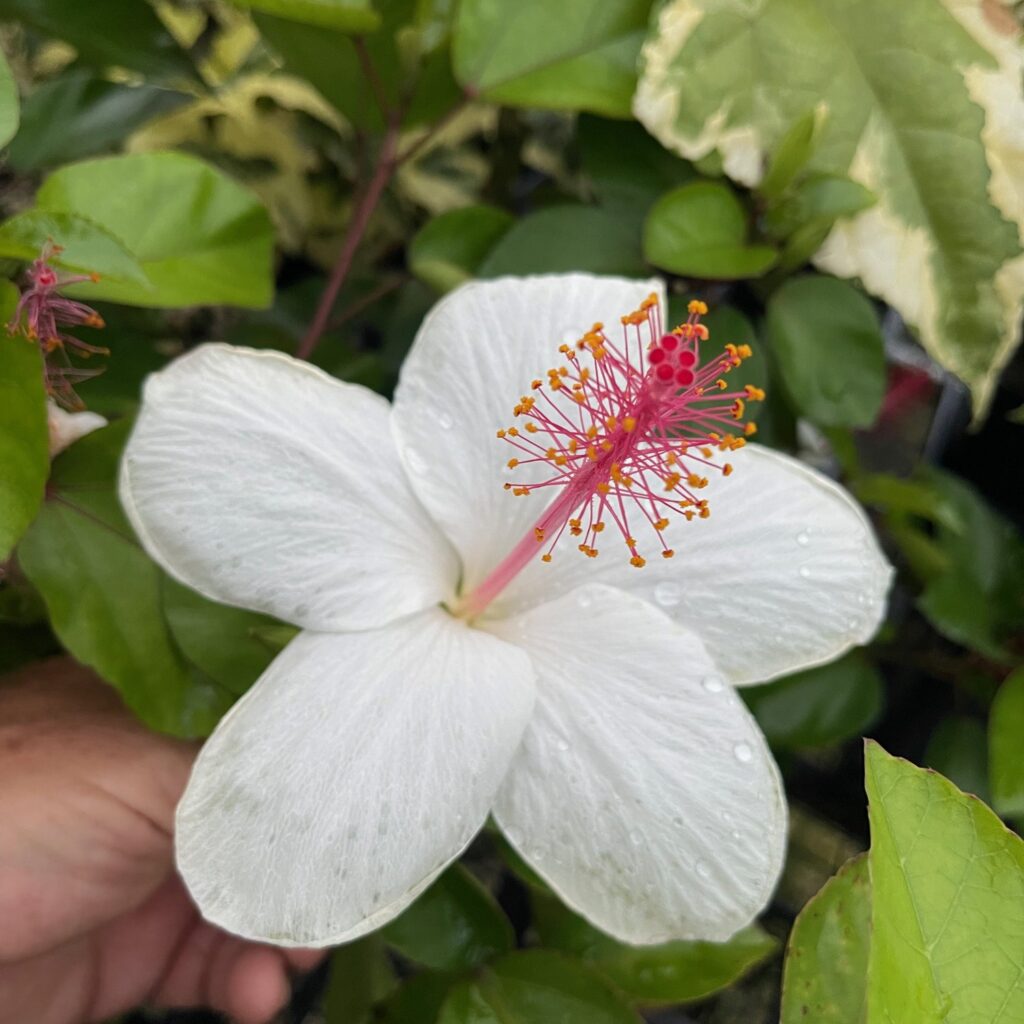
This rare species is native to Hawaii and is one of the few hibiscus plants with pure white blooms. The flowers have a delicate fragrance and a red or pink stamen that provides a lovely contrast. It can grow as a shrub or small tree and prefers warm, humid environments. Best suited for tropical or subtropical zones, it thrives in full sun and well-drained soil. The Hawaiian White Hibiscus is not just stunning—it also has cultural significance and is often used in traditional Hawaiian leis. It brings a sense of purity and peace to garden spaces.
7. Hibiscus sabdariffa (Roselle Hibiscus)
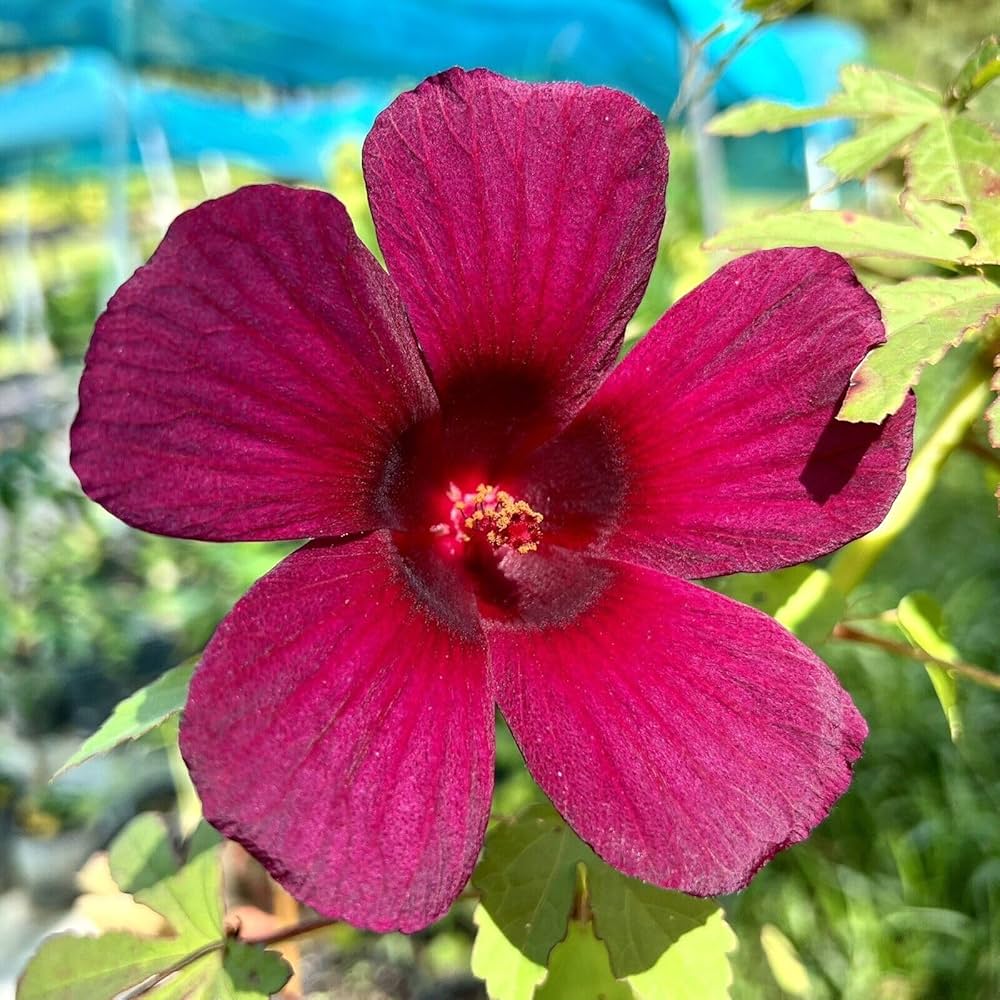
Roselle is a striking plant known not only for its beauty but also for its culinary and medicinal uses. The bright red calyces are used to make hibiscus tea, jams, and sauces, rich in vitamin C and antioxidants. The plant itself produces pink to pale yellow flowers with a red center and grows as a bushy shrub in warm climates. It prefers full sun and can be grown annually in temperate zones. Whether for herbal benefits or ornamental value, Roselle adds a unique twist to the traditional hibiscus garden and is perfect for edible landscapes.
Final Thoughts
Hibiscus plants are unmatched when it comes to adding tropical vibrance and dynamic energy to your garden. Whether you live in a warm, humid zone or a cooler climate with seasonal changes, there’s a hibiscus variety for every gardener. From the dazzling flowers of the Tropical Hibiscus to the culinary appeal of Roselle, each species offers something unique.
With the right selection and care—plenty of sun, well-draining soil, and regular pruning—your hibiscus garden can become a radiant sanctuary of color, fragrance, and charm. Choose from these 7 stunning hibiscus varieties to create a lively and inspiring outdoor retreat.





